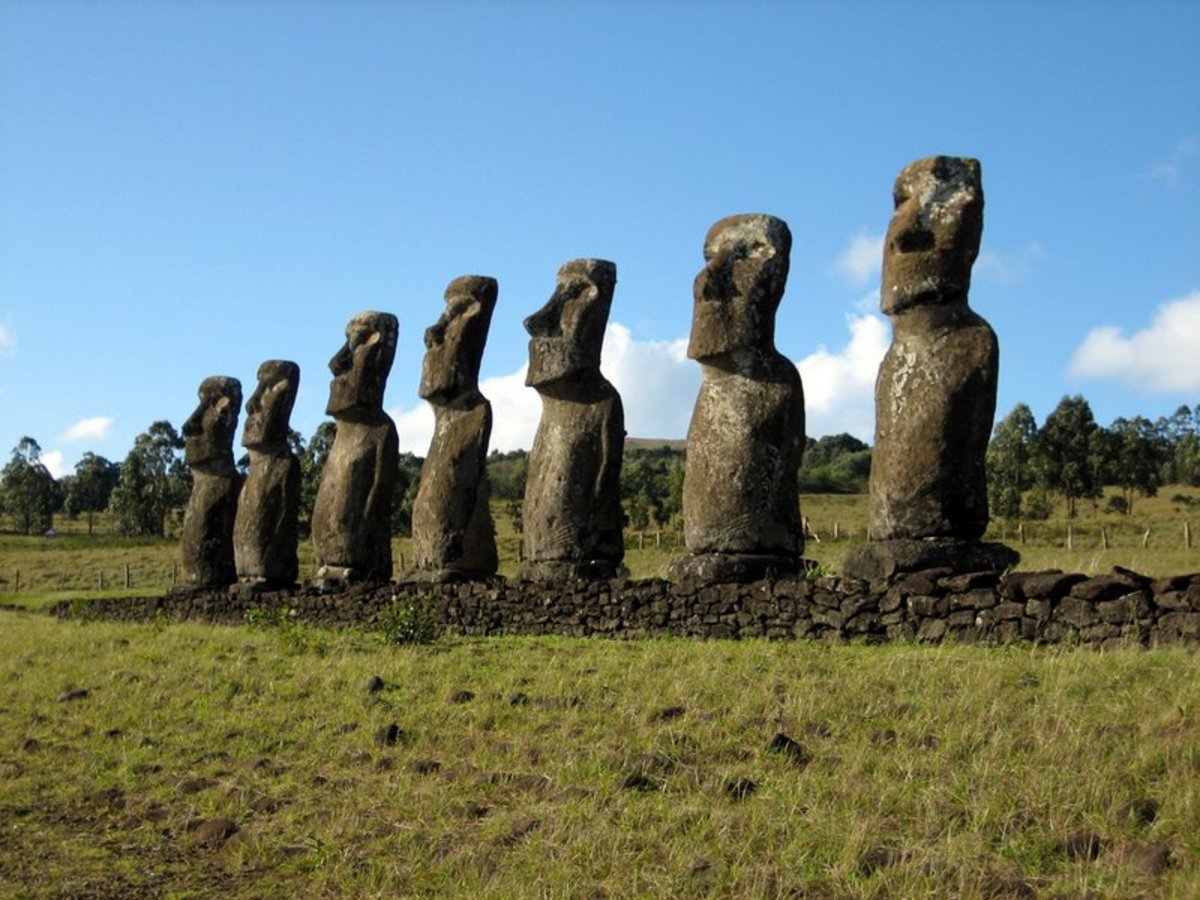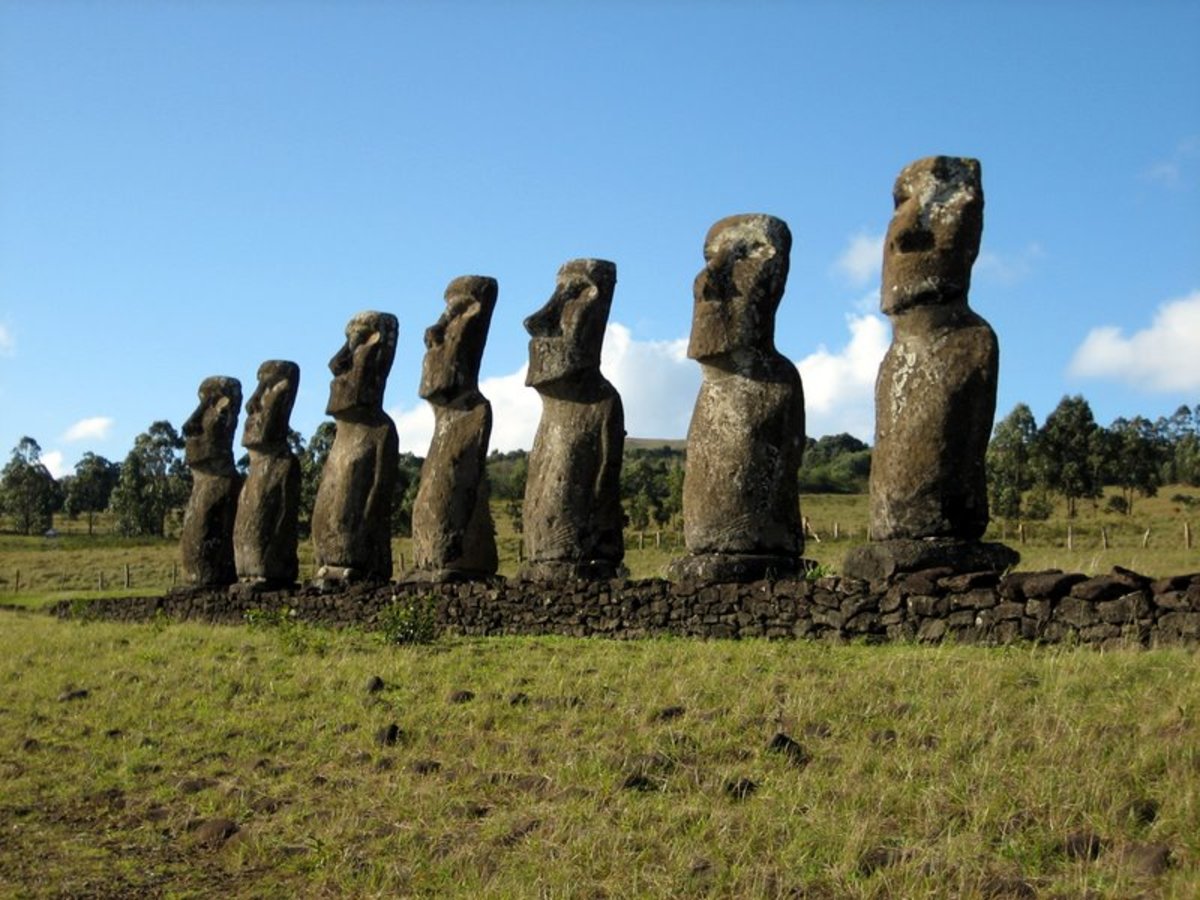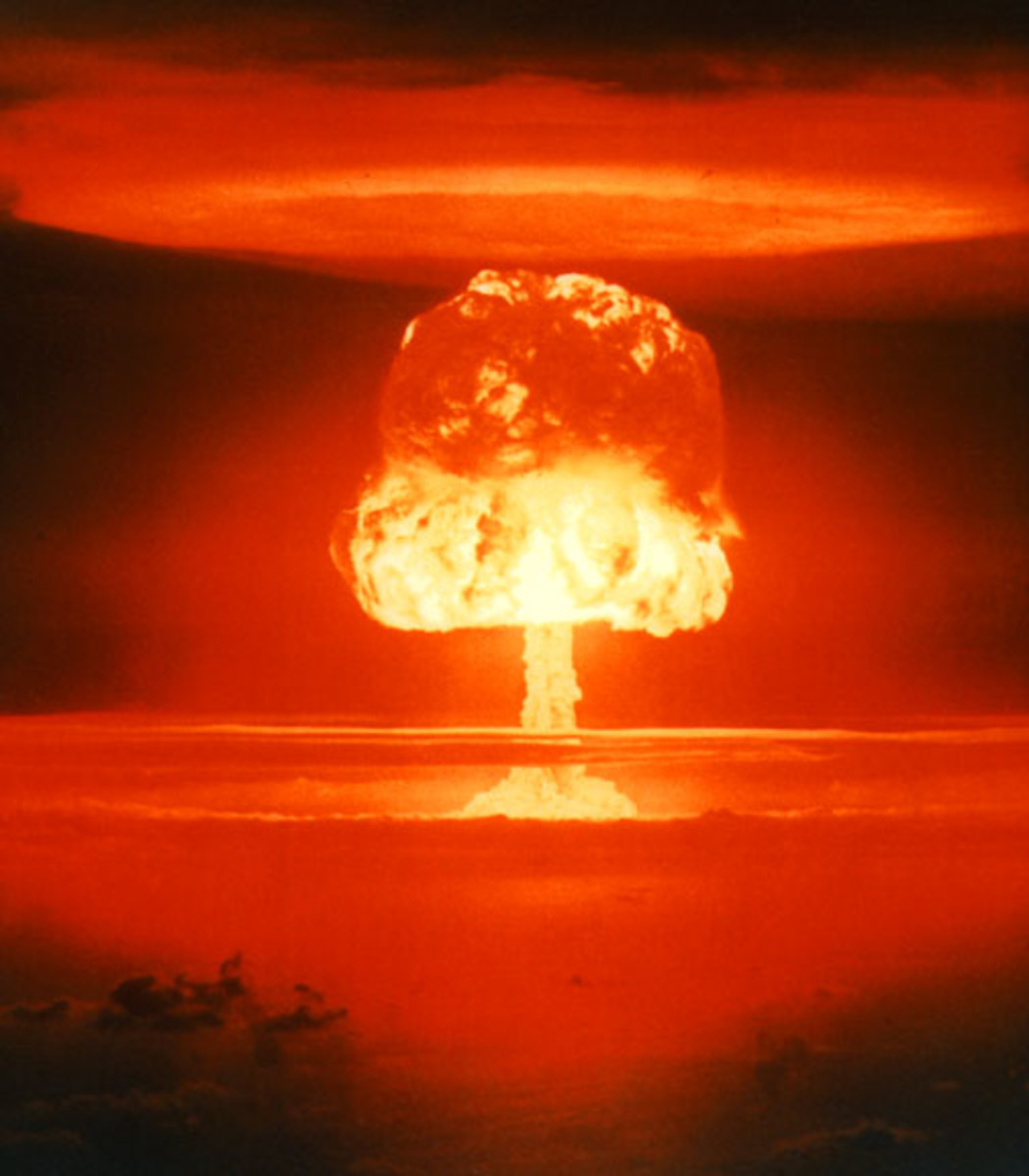Easter Island : A Story of Self-Destruction
Many people know of the Easter Island due to the enormous statues that decorate the island. But what most people don't acknowledge is the tragic story behind these giant monuments. The thriving population of Easter Island suddenly started to diminish. What really happened? Ruts? Diseases? Foreigners? Natural disasters? Or overexploitation? There is really no way to tell. While we can only speculate, the self-destruction scenario is the most possible to have occurred.
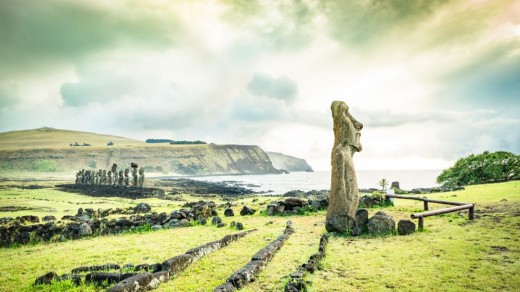
Facts about Easter Island
- It is located in the southeastern Pacific Ocean
- It is also called Rapa Nui from the locals and Isla de Pascua in Spanish
- It is worldwide famous for its enormous statues, called moai, which were created by the ancient civilization of Rapa Nui
- UNESCO has named Easter Island a World Heritage Site
- It is one of the most remote inhabited islands in the world
The map shows the exact location of Easter Island, which is literally in the middle of the Pacific ocean.
The History of the Island
- In the 1200s AD, the first inhabitants arrived on Easter Island and created a thriving culture. The evidence of the existence of this great civilization is the enormous stone moai artifacts that were constructed. Deforestation and land clearing in combination with the introduction of the Polynesian rat and the growth of the population led to an ecological disaster.
- When the Duch arrived in 1722, the island's population had already decreased extremely. In addition, European diseases, slavery and emigration to other islands, further reduced the population to only 111 native inhabitants in 1877.
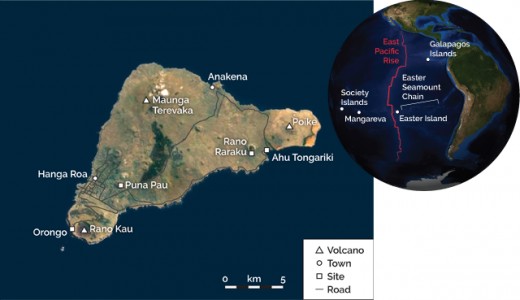
What Happened
Over the years, the overexploitation of the Easter Island resulted in the extinction of all species of land birds and most of the tree species. Overharvesting, deforestation and overhunting in addition to the introduction of the Polynesian rat in the ecosystem, had a great impact on the population of the Easter Island. The inhabitants stopped fishing due to the lack of wood, which they used for the construction of vessels.
Due to the vast deforestation, eventually, the erosion of the land took place. Without the forests to protect the soil from the heavy tropical rainfalls, the land started eroding, which made it difficult to be used for agricultural. The end of fishing, the decline of the agricultural production and the collapse of the birds' population, resulted in starvation.
One theory about the vast deforestation of the Island is that the trees were cut to help in the transportation of the statues
When the Europeans arrived on the Island in the 1700s, they couldn't find a single tree. Easter Island was an empty of wildlife sandy grassland, where the population was starving.
In Conclusion, The prehistoric population of Rapa Nui caused an ecological disaster through rapid deforestation and over-exploitation of natural resources in combination with overpopulation. Easter Island society collapsed.
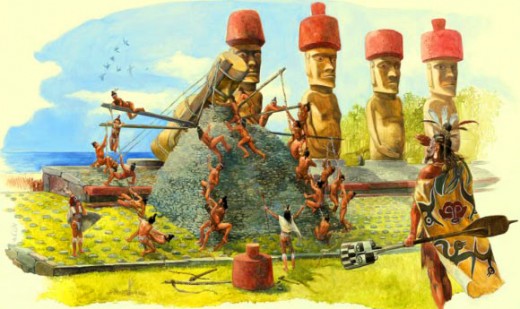
Easter Island today
Currently, the population of the Island consists of 6,000 residents. Upon the ecosystem, 31 wild flowering plants, 14 ferns, and 14 mosses are reported. The Islands progress regarding reforestation is promising as some tree species have been introduced with success, including eucalyptus plantations, and coconut groves.
Today the Island's economy is based almost entirely on tourism. Every year the Island attracts more than 100,000 visitors. Easter Island’s hotels, restaurants and tour businesses take in more than $70 million every year.
The latest news is that the island is at risk of losing its cultural heritage. Easter Island is critically vulnerable to rising ocean levels. The island’s economy is in grave danger. The Easter Island's inhabitants have suffered through one ecological disaster before. Are they going to survive from another one?
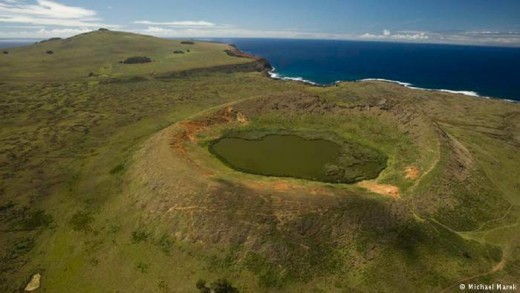
Discussion
It is believed that many civilizations in the past have been destroyed due to overexploitation of the ecosystem's resources. And many more that we will never know about.
Is earth an island in the vast universe ocean? Aren't we all like the residents of Rapa Nui Island? And the main question: are we on the road to self-destruction? Drastic changes must be made starting from all of as in order to maintain and sustain the planet we live in.
What happened to Easter Island is meant to teach us a lesson about sustainability. Only sustainable ecosystems can survive through time. The world of vast consumption is destined to be destroyed by itself eventually.
Easter Island nowadays is a case study in environmental science. Let's hope that humanity will eventually learn it's lesson and take measures to avoid the fate of the Rapa Nui people.
For more tips on how you can start today the race to save and protect the environment follow the link below.
https://hubpages.com/living/Save-the-Earth-Today-10-Simple-Things-You-Can-Do
Did you find the article interesting?
© 2018 Mary Petrou


